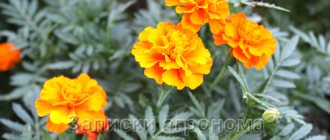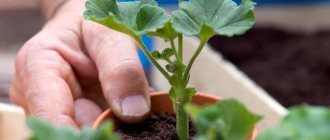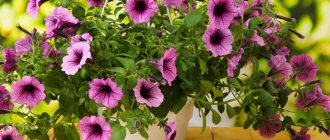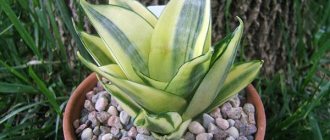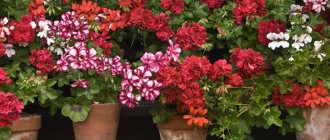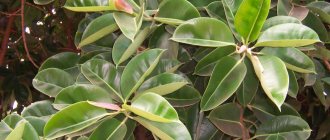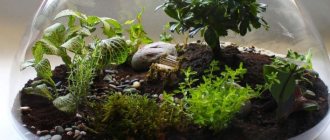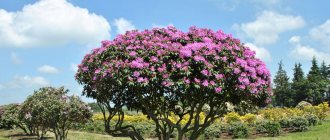Aquilegia is loved not only for its sophisticated and unique beauty, but also for its ease of cultivation. The perennial plant is also shade-tolerant, so if you want to decorate the shady places in your garden, then it is advisable to start growing the crop from seeds. This way you can get a stronger plant and see earlier flowering.
Aquilegia: description, characteristics of the flower
The aquilegia flower develops within two years. The first year of life is characterized by the formation of a bud, the so-called renewal point, which is located at the base of the stem. The formation of a rosette at the root occurs in the fall, and in the spring the leaves of the rosette die off and a peduncle forms in their place. During flowering, single flowers form on the stems.
Aquilegs
The appearance of the flowers of this ornamental plant depends directly on the variety of seeds. There are such varieties as alpine, ordinary, ferruginous and many other types. You can see flowers of different colors and shapes with double petals. These can be either single-colored or multi-colored petals. The flower itself can be red, purple, pink, yellow and other shades. The background for such a quivering flower is bright openwork leaves, as well as spurs, thanks to which aquilegia is quite difficult to confuse with other flowers. The most popular varieties:
- common aquilegia, grows up to 80 centimeters, tolerates cold well, popular varieties are low-growing and terry;
- hybrid - can be found more often than others, the most famous variety is called the Snow Queen, grows to a height of about 60 centimeters;
- Siberian aquilegia, which is found in the forests of Siberia, grows up to 70 centimeters;
- fan-shaped - differs in frost resistance, grows up to 30 centimeters in height;
- the small-flowered variety is distinguished by small flowers and grows up to 30 centimeters;
- star - distinguished by openwork flowers, grows up to 80 centimeters in height.
Popular types and varieties of aquilegia
Popular types of aquilegia (as well as varieties of a specific type of catchment):
- Ordinary, varieties: Winky;
- Nivea,
- Flor Pleno Black,
- Terry variety of common columbine - Clementine Rose;
- Biedermeier,
- Fan-shaped , varieties: Alba,
- Nana Alba,
- Cameo,
- Blue Angel;
- Candidissima,
- Canadian;
- Alpine;
- Small-flowered;
- Glandular;
- Olympic;
- Dark;
- Skinner's Aquilegia;
- Siberian.
Aquilegia - growing from seeds
Aquilegia flower
Growing aquilegia from seeds is the most famous way to grow this ornamental plant. You can either buy them or assemble them yourself. They are collected after the pods appear on the shoots. If you miss this moment, the seeds fall to the ground, forming empty small boxes. That is why, if you do not want crossbreeding, then plant aquilegias separately from other flowers. After collecting the seeds, they should be dried at room temperature.
Important! The seeds must be stored with extreme care, as they are poisonous.
Interestingly, the collected seeds have a shelf life. After two years, the seeds may not sprout. This should be taken into account when purchasing seeds.
Aquilegia: planting seeds
Heliotrope flower - growing from seeds
To figure out how to plant aquilegia from seeds, you do not need to be an experienced gardener. To plant these seeds, it is worth choosing deep containers. If you don’t want to bother with plastic or wooden boxes, then you need to find containers with which you can plant the seedlings directly into the ground. For example, paper bags. Then planting will be easier, and there will be no need to be afraid that the roots will be damaged during replanting.
Containers for planting seeds
For aquilegia you do not need to select a special substrate. It is enough to take a standard substrate or a simple soil mixture.
Conditions necessary for growing aquilegia from seeds
In order for the seeds to germinate successfully, you need to adhere to certain growing conditions. You don't need to do anything special. Aquilegia loves light, humidity and an air temperature of at least 15 degrees. Also, for better climbing, the boxes with the plant need to be covered with film.
Note! Direct sunlight is not acceptable for growing aquilegia.
Seedlings need watering. To do this, you will need a spray bottle and water at room temperature.
If all favorable conditions for the flower are met, the first leaves should appear on the stems. Then it’s time to remove the film and plant the seedlings in separate containers.
Diseases and pests
Aquilegia can be affected by fungal diseases: Alternaria, powdery mildew, phyllosticosis. Diseases appear in damp and cold summers. Spots appear on the leaves of the catchment: whitish, red, brown. The leaves dry out and die.
Plants are treated with copper-containing preparations: Skor, HOM, Abiga Peak, Profit. Spraying is carried out at least 2 times, with an interval of 2 weeks.
As a preventative measure, keep the flower garden clean by removing fallen leaves and weeds. In damp summers, flowers are treated with Maxim, Fitosporin, Trichodermin.
Among the harmful insects of Aquilegia, cutworm caterpillars are annoying. The pest is collected manually, and in case of large numbers, the plants are sprayed with solutions of Shar Pei, Inta Vir, and Karate.
Possible problems
Despite the unpretentiousness of aquilegia, an inexperienced gardener may encounter such problems when growing a perennial.
| Problem | Possible reason |
| Seeds don't germinate | The seed material was stored for more than a year. It is better to plant fresh seeds. Deep landing. No stratification has been carried out. |
| Perennial does not bloom | The plant does not receive enough nutrition and light. The roots of Aquilegia are frozen and the plant needs to recover. |
| The seedlings are thin, fall and rot | There is not enough light. The room is hot. Excess watering. The soil is too dense and the roots are suffocating. |
| White coating on leaves | Powdery mildew is a common watershed disease caused by excess moisture and poor soil permeability. Perennials are treated with antifungal drugs (soda, Bordeaux mixture, HOM). |
When and how to plant seedlings in open ground
The seedlings are ready for planting. To transplant it into open ground, you need to make sure that there will be no frost, since aquilegia is afraid of the cold. Once the temperature has stabilized within 15 degrees, a suitable location is selected.
Note! Moist, loose soil is most suitable for aquilegia.
Before planting, the area where the flower will grow needs to be dug up and fertilized. Next, small depressions are made at a distance and flowers are planted. After planting, you need to make sure that direct rays do not fall on the plants.
Transplanting aquilegia into the ground
Brief information about the plant
Wild aquilegia (Aquilegia vulgaris) is considered a rarity, as it is on the list of endangered plants. You cannot dig up bushes and split them off for replanting. In gardening, varieties bred by crossing (Aquilegia xhybrida) are used, for example: terry aquilegia, fan-shaped, winky, nora barlow and others.
Aquilegia has different names among different peoples: in Russia - columbine, eagle, bell, in English-speaking countries - "dove", in Germany - "elf slipper", in France - "grumpy woman's grass" (the names are given in translation).
How to grow aquilegia from seeds
Small aquilegias require special care. To ensure that other vegetation does not interfere with their growth, the flowers need to be weeded regularly. This is also necessary in order to loosen the soil around the stem, especially after heavy rainfall.
Young aquilegias need to be fertilized with minerals, which should be done mainly in the summer.
Aquilegia will begin to bloom fully in the third year. To prolong its flowering, you need to pick flowers that have bloomed.
Basic care
The rules of agricultural technology for adult plants are common for garden plants - during the period of active growth, flowers need to be watered, fed, weeded, and the soil around them loosened.
Watering
Since the root system of aquilegia goes deep into the ground and does not spread superficially, it can only suffer from a lack of moisture during severe drought. However, this applies to adult seedlings. While they are young and short, they need to be watered more often. The situation is exactly the same with weeds; the flower suffers most from them at a young age.
Feeding
Fertilizing is recommended twice during the summer season; this will be quite enough. The first is at the very beginning of vegetative growth. The optimal composition of the fertilizer is superphosphate, potassium salt and nitrate. Dosage in grams per 1m2 - 50, 15 and 25g, respectively. For the second, a non-concentrated aqueous solution of mullein works well. Consumption is 1 bucket per 1m2.
Choice of location, lighting
The ideal place for aquilegia in terms of illumination would be light partial shade. The plant will grow in open sun, however, in this case it will not produce such luxurious flowering. The flowers will be smaller and not as bright, and the bush itself may look wilted.
It is recommended to cut off the peduncle with ripe seeds and remove it away from the place where the aquilegia grows, so that self-seeding does not lead to unwanted hybridization. For the same reason, it is advisable to sow seeds as far as possible from last year’s flowers.
Planting and caring for aquilegia in Siberia
Since aquilegia can be found in nature in all regions of Siberia, it is very easy to grow it in this climate. In itself, it is unpretentious, frost-resistant and not afraid of the cold.
Siberian aquilegia
To plant aquilegia in Siberia, it is worth remembering that it can be found wild in a birch forest, where there are better conditions for it. That is, in the shade, where there is loose, moist soil.
For Siberia, no special conditions are needed for planting such an ornamental plant as a catchment. It will thrive in soil rich in humus, and with proper care it will bloom for many years.
Preparing the soil
Aquilegia is a completely unpretentious plant that suits any soil. But for seedlings it is better to take looser and lighter soil. There are ready-made substrates for this. But you can prepare it yourself. We do this in equal proportions from sand, humus from leaves and earth.
It is worth remembering that any soil must be disinfected to eliminate bacteria, pathogens or larvae contained in it. This can be done by subjecting the soil to heat treatment using steam or calcining it in the oven for 40 minutes, or repeatedly freezing it outside and bringing it into the heat for 3 weeks at regular intervals.
Aquilegia: reproduction
Reproduction of the catchment occurs by seeds, as well as by dividing the bush and cuttings. The young bush can be easily divided into several parts and planted. But old bushes are difficult to tolerate division, because with this method of propagation, it is very easy to damage the roots. If this happens, the plants become sick.
Note! Most often, propagation of aquilegia is carried out using seeds. Depending on the time of year, they can be sown both as seedlings and in open ground.
Also in open flower beds, propagation can occur by self-sowing. If the seeds are not collected in time, they fall off and are sown throughout the area. To prevent crossings and unnecessary bushes, most of the seed pods need to be cut off.
Botanical description
Aquilegia flowers have a two-year development cycle: in the first year, a regeneration point appears at the base of the shoot, from which by autumn, after flowering, a basal rosette is formed. In spring, the leaves of this rosette die, a second generation of leaves appears, forming a rosette, from the center of which a peduncle will appear, and on it - stem leaves and flowers. The rosette leaves of Aquilegia are on long petioles, twice or thrice trifoliate, and the stem leaves are sessile and trifoliate. Aquilegia flowers are single, drooping, differing depending on the type and variety in size and color: there are blue, yellow, white, crimson, purple, two-color flowers, and also combining several shades.
In the photo: Purple Aquilegia
Flowers of many species are equipped with spurs - hollow outgrowths of petals or sepals in which nectar accumulates. The spur species include European and American types of aquilegia - Alpine, ferruginous, Olympic and ordinary, as well as blue, Canadian, Skinner's, golden and Californian aquilegia. Japanese and Chinese species of aquilegia have flowers without spurs. The fruit of Aquilegia is multileaf; small shiny black poisonous seeds remain viable for about a year.
Propagation by seeds
The easiest way to propagate a catchment is by seeds. For a good harvest, they need to be collected on time and stored correctly. Seeds can be planted either in the spring for seedlings, or in the fall directly into the ground.
For good germination, seeds must undergo stratification. Stratification is the effect of low temperatures on seeds. Therefore, if the collected seeds are lying before planting, then in mid-spring they are mixed with soil and placed in the refrigerator. It is also possible to sprinkle the seeds with snow. .
Seeds
What to do with aquilegia after flowering
Aquilegia has faded, what to do next:
- stems that have bloomed and lost their appearance need to be trimmed. They are cut off mainly to the very sockets;
- what is cut can be used for compost if the flower was healthy, but if the bush was sick, then it is better to take the remains away, and it is better to burn them so that healthy plants are not infected;
- the catchment has flowered - it’s time to collect the seeds by cutting the seed pods from the stem;
- Also, if you propagate a plant by division, then this should be done exactly when flowering has stopped.
Propagation by cuttings
One of the ways to propagate aquilegia is by cuttings. Cuttings are much easier to do than fiddling with seeds and seedlings.
There are certain rules for cuttings:
- in the spring, before the leaves bloom, you cut off the young shoots and treat the cut with a product that stimulates growth;
- The cut shoot is planted in the ground or placed in a container and covered.
For the cutting you need to choose a suitable place:
- the cuttings, like the seedlings, are planted in soil with humus;
- You need to choose a place in the garden that is dark and has sufficient moisture.
Note! The planted cuttings need to be watered without removing the film from it, and within a month it should take root. Once the cutting has taken root, it can be transplanted into a prepared place in the flowerbed.
Planting dates by region and lunar calendar
Aquilegia is planted by seeds in autumn and late winter. Such early sowing is due to the need to subject the seeds to stratification and their slow germination.
Approximate dates for sowing watershed seedlings in the spring by region:
- middle zone and Moscow region - February;
- northern regions and Siberia – end of February;
- southern regions – January.
In the fall, the seeds are immersed in the soil in October - November so that they do not have time to germinate before the arrival of frost.
When to plant aquilegia according to the lunar calendar for 2022:
| Month | Better days | Month | Better days |
| January | 25-27, 29-31 | July | 6-8, 23-27, 30, 31 |
| February | 3-14, 17-23 | August | 2-6, 8-10, 12, 14, 22-24, 29-31 |
| March | 3-8 | September | 5-8, 13-15 |
| April | 3-7, 12-15, 25-30 | October | 2-4, 8-15, 20-22 |
| May | 2-5, 7-12, 18-25, 27-29 | november | 3, 4, 9-12, 19-23 |
| June | 1-3, 6-8, 23-26 | December | 1, 2, 4-6 |
In 2022, unfavorable days fall on the following dates:
- January – 2, 3, 17, 18
- February – 1, 2, 16, 28
- March – 1, 2, 18, 27, 28
- April – 1, 2, 16, 23
- May – 1, 16, 30
- June -14, 18, 29
- July – 13, 14, 28, 29
- August – 11, 12, 27-28
- September: 9-10, 26, 27
- October: 9, 10, 25, 26
- November: 1, 2, 7-9, 24, 25, 28, 29
- December: 7-9, 23-25
@John Leathwick, Flickr
Reproduction by dividing the bush
The division method is used only for plants that have been growing for at least three years. This is done in early autumn so that the plant has time to take root before frost sets in.
The procedure for dividing the bush:
- a bush is dug up;
- the root of the bush is divided with a knife into as many parts as possible;
- the cut is lubricated with activated carbon;
- the bushes are planted in a new place with suitable soil and watered well;
- The surface around the bush is covered with mulch.
How to transplant aquilegia to another place
When transplanting, you must follow certain rules. Need to:
- dig up a bush for replanting;
- choose a suitable place for transplantation;
- loosen the soil in this place and water it;
- plant the bush without shaking off the earthen lump from the rhizome;
- water and compact the soil around the plant.
Note! As a result, we can say that aquilegia is a beautiful, unpretentious flower that does not require special care. In order to grow a watershed in a flowerbed, you need to follow a few simple rules.
Namely:
- plant the flower in soil enriched with humus;
- protect the plant from direct sunlight;
- fertilize the soil with mineral additives;
- feed the plant with vitamins;
- make the transplant on time.
And the flowers will not get sick, and from year to year they will delight the eye with lush blooms.
Advantages of application in landscape design
The varietal diversity of aquilegia allows you to grow an excellent flowering front garden. Certain varieties grow and develop in pots on windowsills, but are also suitable for landscape design. The fact is that the plant has:
- strong immunity;
- resistance to natural disasters;
- thrives in cold climates;
- loves high moisture.
In addition to these advantages, aquilegia is a perennial crop, which is also a plus if you want to become the owner of a luxurious flowering garden.
Combines with ornamental and coniferous plants. It is noted that aquilegia prefers proximity to Korean fir and European spruce. This combination creates a style called Mediterranean.
Also combined with ferns, bells, irises. Since the flower loves moisture, it is often planted near bodies of water. They look great against the backdrop of coastal plants.
It is recommended to use flowers not only in flower beds, but also for alpine slides and rock gardens. But before planning such a room design, it is worth considering the varietal diversity.
